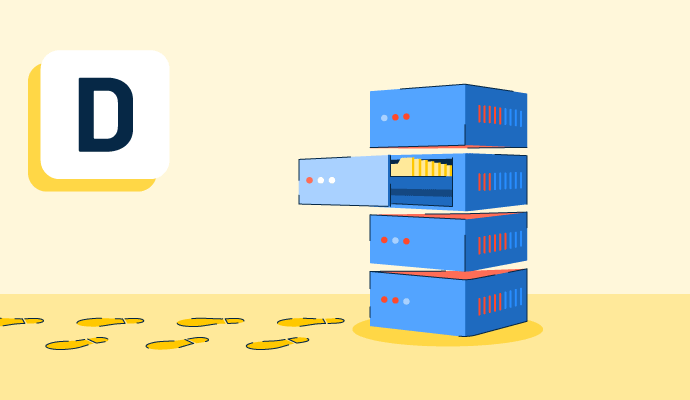What is a data breach?
A data breach is an incident that exposes sensitive and confidential data to unauthorized entities. It happens when an individual or application exploits private data or an unauthorized logical IT perimeter.
A data breach is a security violation ranging from low risk to highly critical. It may involve the leak of financial information such as bank details, personal information, or trade secrets of corporations. Many organizations document breaches and report them to authorities with data breach notification software.
A data breach is also called unintentional information disclosure, data leak, information leakage, and data spill. Breaches can occur when individuals attack for personal gain, organized crime, or national governments. It can also be due to poor system security.
Types of data breaches
Data breaches can occur at any time in any organization, regardless of size. Below are some of the common types.
- Insider threats take place when individuals or groups of individuals within an organization compromise the data.
- Phishing, also known as social engineering, is when an individual poses as someone else to access data or sensitive information. Phishing makes use of malware injections to get access to a company’s or an individual’s assets.
- Malware, or malicious software, is designed to destroy computer systems using intrusive software. Trojan viruses and Spyware are both types of malware.
- Ransomware attacks a victim’s data and demands a ransom. Some examples of ransomware include WannaCry, Crypto Locker, and Petya.
- Physical data breaches refer to the physical theft of sensitive data and information, either in the form of documents or through hardware.
- Keylogger breaches are when a user’s keystroke is recorded to steal login information and confidential data. It’s also legally used to monitor and ensure safe data usage.
- Password breaches occur when attackers guess and steal weak passwords to access unauthorized systems. This prevalent method is also known as a brute-force attack. Simple passwords based on the date of birth, phone number, or personal IDs are easily hacked. It’s also easy to hack passwords if they’re stored on web browsers or devices.
How data breaches occur
Data breaches often happen due to system weaknesses and poor data security practices. Common scenarios are discussed here.
- Unintentional internal breach: An employee may get unauthorized access to information from a colleague or an unlocked system. This may not be considered a threat, but still counts as a data breach.
- Intentional internal breach: An employee or individual purposely accesses an organization's data with the intent of sharing it with others for profit.
- Physical loss of documents: Loss of sensitive documents within an organization with a high risk of exposure to unintended parties.
- Digital data loss: Hackers access a system to gain unauthorized access to sensitive information to steal or harm a person or an organization.
Data breach prevention
Cyber attacks are inevitable, and they come with heavy costs. It’s necessary to know the basic preventive measures to reduce exposure to data breaches and respond effectively.
- Identify weak areas. Organizations must understand the vulnerabilities where attackers can gain unauthorized access. For example, attackers might try to take advantage of a device or system that hasn’t been updated or that has components that are easy to exploit. This insight leads to actions that improve defenses.
- Update technologies. Businesses rely on technology. All sensitive and confidential data is primarily stored digitally. Keeping these technologies current and adapting to new technologies maintains data protection. For example, organizations must patch vulnerabilities, update operating systems, and secure access solutions for cloud apps.
- Never trust. Always verify. A Zero Trust Model is a strategic approach that, instead of assuming everything is safe behind the corporate firewall, reflexively assumes breach and verifies each request regardless of where it originates. Each request is encrypted before access is granted.
- Relevant cyber training. Attackers target those with poor cyber practices. Organizations have to provide high-quality training to their employees on best practices. The training helps individuals spot threats and protect data.
- Incident response plan. In case of an incident, a well-documented response plan helps organizations to strengthen their defenses, so they respond efficiently. The plan should include a list of roles and responsibilities for response team members, a business continuity plan, a summary of tools required, a list of critical network and data recovery processes, communication methods during a breach, and details of compliance requirements.
- Security breach notification laws. These are laws that force organizations to notify individuals or affected parties about the data breach. If the individuals or the entities are not notified, it results in huge fines. These laws differ for each organization and country.
Targets in data breaches
Data breaches come from either an innocent mistake or a malicious act. It is important to identify the vulnerabilities the data breachers might target.
- Weak passwords: Username and password information allow access to a network. Using birth dates or phone numbers for passwords gives hackers easy entry into the system.
- Stolen credentials: Hackers get credentials through phishing and can use them to steal sensitive data.
- Compromised details: Malware attacks give access to authentication steps that normally protect a computer.
- Bank details fraud: Criminals steal card details by attaching card skimmers to ATMs. Whenever a card is swiped, the data is stolen.
- Third-party access: Hackers use malicious apps to get into systems.
Data breach vs. cyber attack
A data breach is when data is stolen intentionally or accidentally. A cyber attack is when an individual hacks data intentionally to cause harm to an organization or another person.
A data breach may be unintentional, while a cyber attack is always intentional.
A data breach occurs when confidential data is exposed, either to documents or hardware. A cyber attack is always an electronic theft of confidential data. While a data breach may not have a high impact, cyber attacks always have severe consequences for the organization.
Learn more about cyber attacks and how to protect digital assets from them.

Sagar Joshi
Sagar Joshi is a former content marketing specialist at G2 in India. He is an engineer with a keen interest in data analytics and cybersecurity. He writes about topics related to them. You can find him reading books, learning a new language, or playing pool in his free time.





















